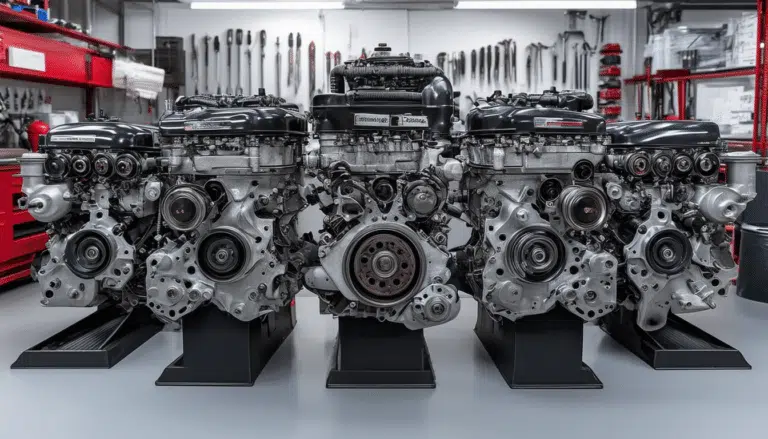How to check and adjust wheel alignment to save gasoline
Proper maintenance of a vehicle not only ensures its safety, but it can also significantly influence fuel efficiency. One of the key aspects of this maintenance is the wheel alignment. Properly checking and adjusting the wheel alignment not only improves the handling and stability of the car, but it can also lead to lower gasoline consumption. Incorrect alignment can create additional resistance when rolling, forcing the engine to work harder and, consequently, consuming more fuel. Learning to check and adjust this essential element is, therefore, a crucial step for any driver looking to optimize their fuel expenditure.
The wheel alignment is a critical aspect that many drivers tend to overlook, but its impact on gasoline consumption and vehicle safety is significant. Properly adjusting the alignment not only optimizes the performance of the car, but it can also help reduce fuel costs. This article breaks down the process of effectively checking and adjusting wheel alignment.
Importance of Wheel Alignment
Wheel alignment refers to adjusting the angles of the wheels so that they are oriented correctly according to the manufacturer’s specifications. Proper alignment ensures that the vehicle handles in a stable and safe manner, as well as reduces irregular tire wear and improves fuel efficiency.
Benefits of Proper Alignment
When the wheels are properly aligned, the vehicle moves more efficiently, requiring less energy to travel. This translates into lower fuel consumption, which can result in significant savings over time. Additionally, by preventing excessive tire wear, their lifespan is extended, providing an additional economic benefit.
How to Check Wheel Alignment
Checking the wheel alignment is not a difficult task, but it will require attention to detail. Here is a basic procedure:
Visual Inspection
The first step is to perform a visual inspection of the tires. Look for signs of irregular wear, such as excessive wear on the edges of the tires or eroded appearance. This could indicate that the alignment is not correct.
Driving Test
Drive the vehicle and pay attention to the maneuverability. If the car tends to drift to one side, this may be a sign of misalignment. Another simple test is to let go of the steering wheel in a neutral position while driving straight; if the vehicle drifts, it is a clear indication that alignment is needed.
Adjusting Wheel Alignment
If it is determined that the alignment is not correct, the next step is to adjust it. This process should be performed by a professional, but it is good to know what it entails.
Necessary Tools
An alignment machine is essential for measuring the angles of the wheels and making necessary adjustments. Also, torque wrenches will be required to ensure that all bolts and nuts are tightened to the appropriate torque, following the manufacturer’s specifications.
Alignment Process
The process generally involves adjusting three important angles: camber, caster, and toe. Each of these angles affects how the vehicle behaves on the road. Ensuring that all these angles are within the recommended specifications not only optimizes the alignment but also improves fuel efficiency.
Frequency of Checking
It is advisable to check the wheel alignment at least every 10,000 kilometers or whenever symptoms of misalignment are perceived, such as vibrations in the steering wheel or irregular wear on the tires. Maintaining a routine check helps prevent larger problems and contributes to safe and efficient handling.
Conclusion
Proper wheel alignment is essential for efficient handling and controlled spending on fuel. Be sure to schedule periodic checks and adjust the alignment as necessary to maximize your vehicle’s performance. For more information on how brake maintenance can influence fuel consumption, visit here. If you ever find yourself in a breakdown situation on the road, refer to this guide for advice on how to act.
Wheel Alignment Inspection and Adjustment to Save Gasoline
The alignment of the wheels is a fundamental aspect of vehicle maintenance that not only affects handling quality but also has a significant impact on fuel consumption. Properly adjusting alignment reduces rolling resistance, allowing the car to operate more efficiently and therefore save gasoline.
To check if the wheel alignment is correct, it is vital to watch for certain warning signs. This includes irregular tire wear, the vehicle drifting to one side when driving straight, or any unusual vibrations. Performing a periodic check every 10,000 kilometers or if any change is noticeable in the vehicle’s direction or handling can be very beneficial. This way, it ensures that the alignment is within the specifications of the manufacturer.
The adjustment process involves the use of specialized tools, such as an alignment machine, which measures the angles of the wheels and allows for necessary corrections. The use of torque wrenches is crucial to ensure that all bolts are tightened according to the recommended torque, which avoids future problems in the suspension system.
In summary, maintaining proper alignment not only improves vehicle performance but also translates into lower fuel consumption. This simple vehicle maintenance is key to maximizing the lifespan of tires and minimizing operational costs, ultimately benefiting any driver looking to save on fuel and improve their vehicle’s efficiency.



